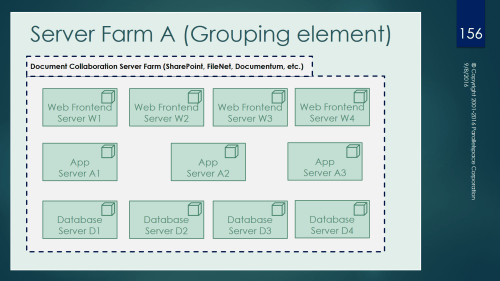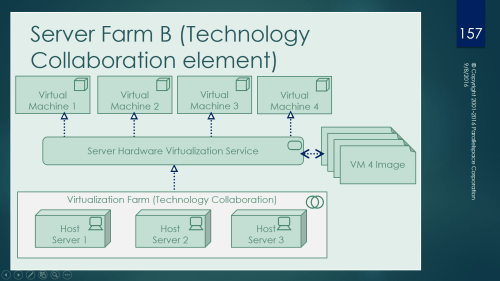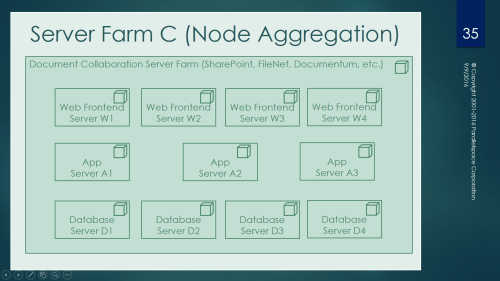For the ArchiMate 3.0 experts: What is the preferred way to model a Server Farm given some of the new elements in ArchiMate 3.0?
In ArchiMate 2.1, a collection of nested Nodes was the most obvious solution. What is the preferred approach using ArchiMate 3.0 to model Server Farms given a) Grouping is now a (an almost) first-class concept, and b) the new Technology Collaboration element. What is the best choice?
Here’s 2 examples: Server Farm A using Grouping and Server Farm B using a Technology Collaboration element. I’ve used slightly different scenarios for each example but my assumption (hope) is that is shouldn’t make any difference.
Server Farm A using Grouping
Server Farm B using a Technology Collaboration element
What is the preferred way to model a Server Farm given the new elements in ArchiMate 3.0? a) Grouping, or b) the new Technology Collaboration element. …or something else? What are the pros and cons of your choice?
Add your answer to the Comments section.
Best regards,
Michael Herman (Toronto)
Parallelspace Corporation
mwherman@parallelspace.net
p.s. Below is a model for Server Farm C – using the Node aggregation approach we used with ArchiMate 2.1.




To Me, it would appear that a synergy of all three might be warranted IF the SharePoint Farm in question was virtualized
LikeLike
Pingback: Michael Herman, Inventor: #Graphitization | hyperonomy.com - digital intelligence
I use the same pattern as is described on the picture with Farm A and Farm C. This is the natural way how to visualize the SharePoint farms. I use also more granular diagrams where I model the SharePoint “Services” as a Archimate Functions (Because Services in Archimate have different meaning ,right?) and the Archimate Services are then used for modeling Services for non SharePoint applications and Business Procesess, Actors etc. The Archimate 3 grouping seems to improve the modeling of the farms, however thinking about it, the Archimate 2.1 way also makes sense because then you have one Node concept which you can reuse as an aggregated representation of a Farm in another models with higher level of abstraction (where Node is a farm and no details about web,app,db servers are needed).
The question is what do want to model exactly and what is needed to visualize.
To me the Farm B diagram is a try to model virtual platform but there is a question if there is need for this sort of visualization. The administrators of virtual infrastructure have already their way how to visualize virtual infrastructure and in still more and more CLOUDy environments everything is more less node or even just a service. So visualization of the virtualization technology in EA or Solution Architecture doesn’t make sense.
LikeLike
Hi,
The realize relationship from service to node in option B is not valid if you follow the archimate standard. It’s a shame though because the rest of is really makes sense.
LikeLike